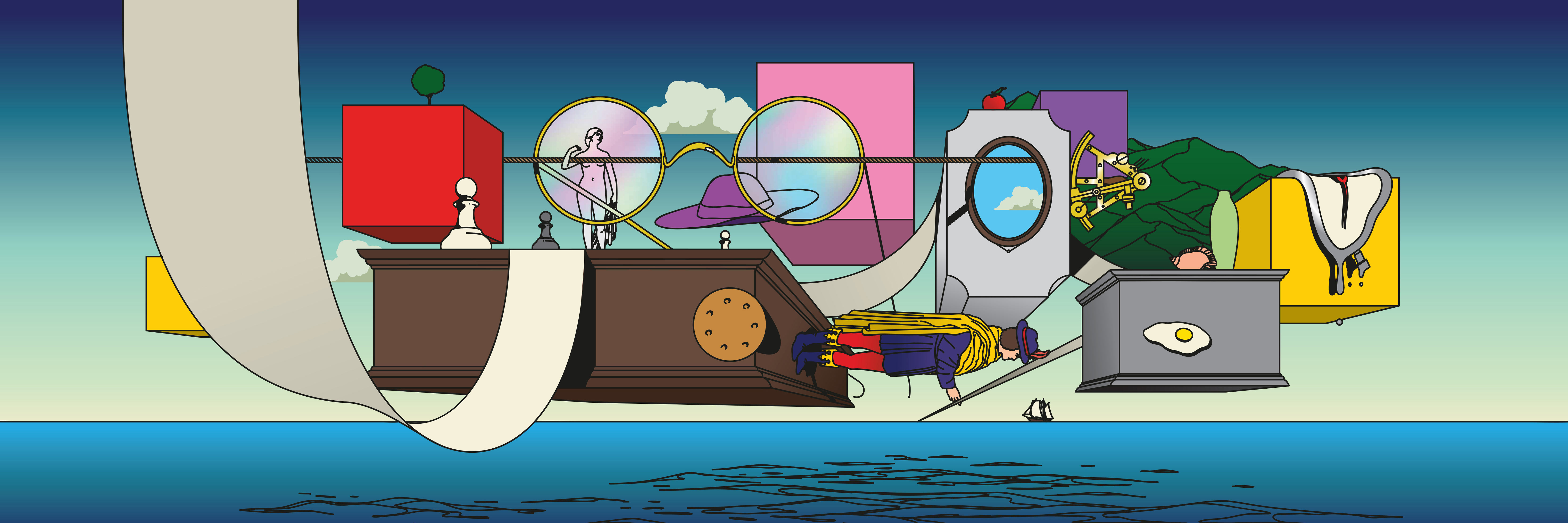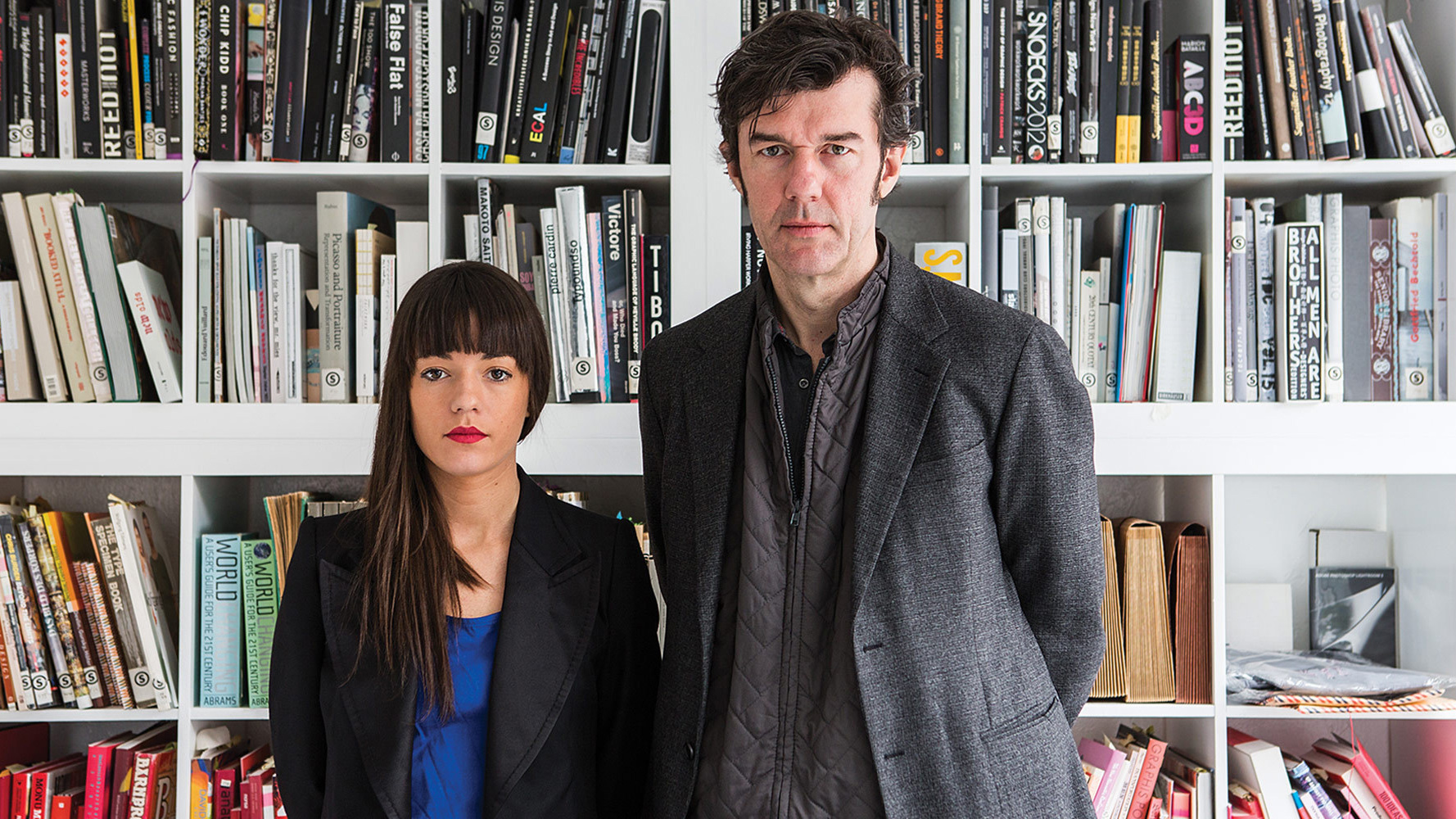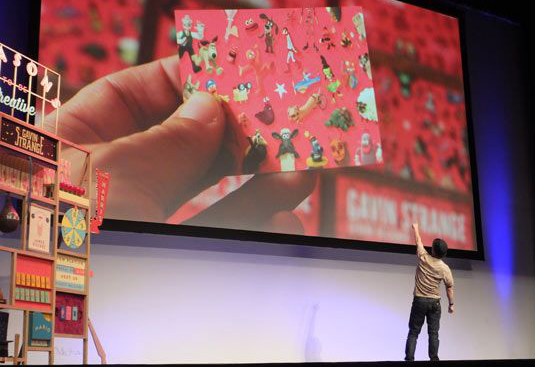How to get more clients for your business, straight from the experts
Grow your business with these pro tips, including some you haven't thought of.

If you're a creative small business or freelancer who wants to get more clients, you'll want to have a toolkit of strategies to grow your client base. While you might already be ticking the boxes of great portfolio design and you're on all the social media platforms, there are undoubtedly some more out-of-the-box ideas for really amplifying your creative of offering.
Below, we've rounded up expert advice to get you a bigger client base, meaning more regular and consistent work in your creative field. This comes straight from the pros who are already successful – so you know it works.
01. Get yourself seen: online and in real life
It may sound obvious, but if you’re looking to branch out and go freelance then you need to let the industry, and potential clients, know that you’re for hire.
The first step, if you haven’t done so already, is to get yourself a web presence to showcase your design style and portfolio. Use a tool like Squarespace, WordPress or Drupal - the first one's a good option if you have zero web skills. Check out this full selection of the best website builders to find the software that works best for you.
Most importantly, you need to clearly highlight on your page that you’re available for commissions - you'd be surprised how many freelancers don't think of this. Add this statement to your site or blog, as well as your personal social media pages, and make sure it's the first thing people see. If you haven’t many projects to showcase yet (or have too many that use the same skill set), get creative with a few self-initiated projects so you can show off all of your abilities as a designer.

Another great way to expand your industry reach is to participate in a relevant exhibition – or stage your own. However hosting an exhibition could raise your blood pressure before it raises your profile, so you’ll need to be organised: know your angle (what are you showing and why?), pick the right venue for your budget, and choose your date carefully.
Publicising your exhibition is crucial, so set up a website, design some eye-catching flyers and shout about it on social media. Then, on the day, don’t hide away. Approach visitors and be ready to talk professionally about your work. This is a prime opportunity to add to your contacts, so don’t waste it.
Daily design news, reviews, how-tos and more, as picked by the editors.
Our best tip? Leave a large stack of business cards where they can be clearly seen, along with some beautiful takeaway marketing material – postcards or posters, perhaps – that tells prospective clients or collaborators who you are and how they can contact you.
02. Give your clients something to talk about

Satisfied clients aren’t just repeat clients – they’re the gatekeepers to a whole new market of prospective clients and collaborators, so it’s in your interest to give them something to talk about. We don’t just mean exceeding expectations on the creative side during a project: this is also about investing in client care.
You need to ensure your clients know when and how to get in touch with you, arrange regular catch-up meetings, and always be proactive with ideas to improve a project – or even a client’s wider business.
The best way to encourage a client or collaborator to speak out about your services is to make every project the very best it can be. Just ask Julien Vallée, co-founder of motion studio Vallée Duhamel, which created both projects featured above. His studio has built a global reputation thanks to the team's stunning attention to detail, and willingness to go above and beyond every brief.
03. Attend the right events

There’s no substitute for meeting people face-to-face. Networking for the sake of it can be a soulless activity, but there are a few tips and tricks for making valuable connections – and they all start with picking the right events.
First, identify who you want to meet and why: are you looking for prospective new clients, collaborators or creative employers? Heavyweight industry conferences like How Design Live, OFFF and Generate New York boast big-name speakers and lucrative networking opportunities; while weekend events like Georgia’s Creative South are fantastic for meeting like-minded new collaborators.
Having good connections close to home can be invaluable, too. There are hundreds of less formal, local meet ups like Glug and AIGA events, as well as exhibitions and more – attending one or two might just reveal a booming creative network right on your doorstep.
04. Make the right impression

Once you’ve decided which events you’re going to attend, do some research before turning up. Which speakers or attendees do you most want to make a connection with? One way to make that initial conversation easier is to break the ice before the event – perhaps with a quick introductory email or tweet, letting them know you’ll be attending too and would love to meet up.
During the event, your goal is to make a good first impression, so ditch the hard sell and focus on building relationships. Basic conversation skills are important here: listen as much as you talk, ask questions, make direct eye contact and smile. And whatever you do, don’t forget to bring your business cards: this is exactly what they’re for.
05. Break onto the speaker circuit

Speaking at creative events is a brilliant way to raise your profile, as well as cement your authority as an expert in your chosen area. Plus, being able to talk confidently about your work in any situation – whether you’re on stage talking to an audience or pitching to a client – is a crucial design skill that will elevate your practice.
However, without experience it can be tricky to bag your first speaking gig. But there are ways to persuade a conference curator to take a chance on you. Here are our best tips:
- Learn from the pros
Analyze the presentation style of your favorite speakers: what do they do well? Why was it good? Equally, what didn't work so well and why? - Write a winning proposal
The best speakers don’t just walk through their portfolio – after all, it’s already online for everyone to see. To stand out as a speaker, you need to have a great story to tell. - Know your audience
Make sure you pitch your talk at the right level. There’s a difference between talking to students and professionals... - Share the lows as well
Audiences don’t want to be marketed to. They want to know about your failures and mistakes – and how you dealt with them; not just the highlights. Make your talk realistic and relatable to leave a lasting impression.
06. Get creative with video

Video is king. Not only do audiences react well to video, search engines and social media platforms love it – so if you want higher visibility, a video strategy should be high on your list of priorities.
That doesn’t mean you need to develop complex video-editing skills overnight, though. It could be as simple as natively uploading a 30-second video for your next artwork to Facebook (a sped-up screencapture, for example) with a call-to-action at the end and a link to your website.
If you’re feeling more confident, why not use Facebook Live to offer portfolio reviews, or Instagram video to share a quick how-to? The key is to create engaging content that people want to share – so do what you do best and get creative.
Ultimately, it's the same principle as getting your clients to speak out about your services: if you give value to your audience, they'll spread the word for you.
And if you’re lucky, you might just go viral.
07. Be proactive
Approach agencies, brands you’d like to work for or even your local butcher if you spot that their branding needs a much-needed facelift whilst picking up your sausages!
Also, take a look back through your inbox and spot any potential clients that you may not have thought of before – perhaps you did some freelance work for a company two years ago, or there was that job you never got but built a good relationship with the person that interviewed you. Be imaginative with your client ‘hit list’ and don’t leave any avenue unexplored.
08. State your costs

Before embarking on a marketing mission, you need to be sure of your hourly and daily rate so that potential clients know off the bat how much you’re likely to charge. For that, see our handy guide on how to price your work.
No matter how much you need the work, it’s important to be realistic with the client when you take on a job how long that will take and what the fee will be, otherwise you may find yourself struggling to meet the demands of a very unhappy client.
Don’t forget that there’s also a range of online project management tools out there, such as Basecamp and Trello to help you get organised and meet all of your deadlines.
09. Build on your success
Once you’ve completed the work, make sure you’re not the only one shouting about how brilliant it is. There’s nothing better than a shining endorsement from someone who’s worked with you to help build your personal brand reputation.
Ask your (satisfied) client for a quick quote about the work and their working process with you and then add this to your online portfolio or blog before posting on your social networks. Remember, the more people endorsing you, the more buzz you can create about you and your work.

Georgia has worked on Creative Bloq since 2018, and has been the site's Editor since 2023. With a specialism in branding and design, Georgia is also Programme Director of CB's award scheme – the Brand Impact Awards. As well as immersing herself with the industry through attending events like Adobe Max and the D&AD Awards and steering the site's content streams, Georgia has an eye on new commercial opportunities and ensuring they reflect the needs and interests of creatives.
- Natalie Brandweiner
- Julia SagarEditor-in-chief retail
You must confirm your public display name before commenting
Please logout and then login again, you will then be prompted to enter your display name.
